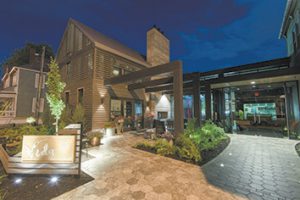URBAN DESIGN: It’s time to put trees on the city’s priority list
Indy’s urban canopy leaves something to be desired, but concerted effort could change that.
Indy’s urban canopy leaves something to be desired, but concerted effort could change that.
These urban enclaves are perfect environments on which to build grassroots economy.

Vida is anchored by a renovated Italianate structure, but it’s the marriage of new and old that is both forward-looking and genuine.

Small towns and big cities both provide the glue that can bind us together.
Let’s show resilience by making the most of our too-wide streets and untapped river.
The sameness of our downtown grid presents challenges for the city center.
Streets are a city’s first ambassadors. Most in downtown Indianapolis, however, don’t live up to our standards of hospitality.
The next mayor should make planning an inclusive process.
One of the city’s diagonal arteries is a study in blending the new with the old.
Other cities offer models for extending planning across county lines.
One-size-fits-all solutions don’t work for urban neighborhoods.
Plan 2020 is a good start toward building on, refining successes of the past.
Project to relocate jails and courts is a failure of urban design fundamentals.
Bus rapid transit line could transform the corridor in ways that would benefit the entire city.
The houses in our older neighborhoods can work to the city’s advantage; let’s not destroy them.
Indiana has branded itself as the Crossroads of America. We take pride in being an automotive and industrial state. You’d think we’d embrace the idea of rest stops that welcome visitors and celebrate the car culture.
Indiana is producing plenty of college graduates, but they don’t stick around long.
The city needs a strategy to transform into a destination visitors would recognize.
Here’s how we can mitigate the damage being done by the city’s acres of asphalt.
A street’s appeal and economic potential depends on good design principles.